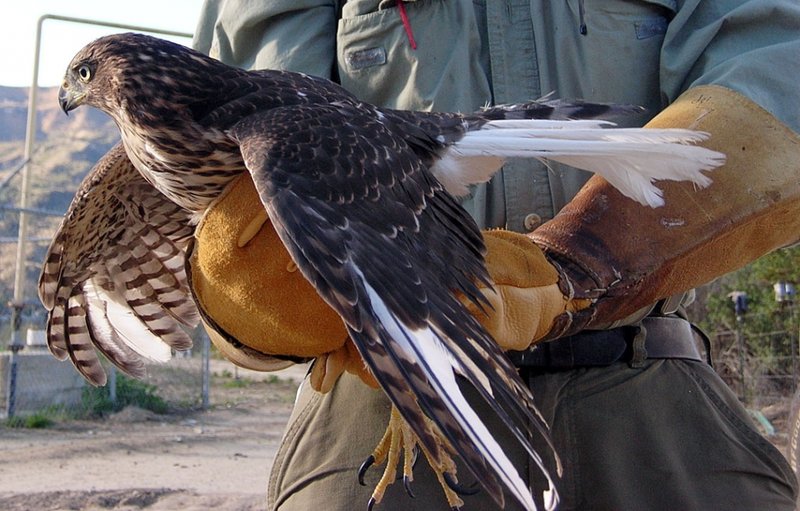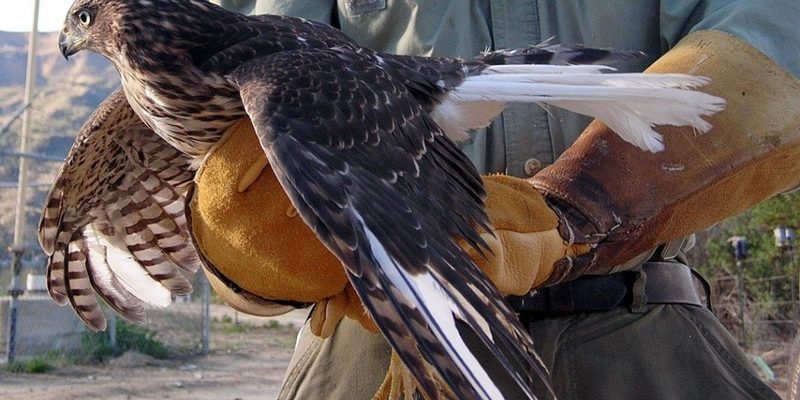
These birds are often found in wooded areas across North America, which is part of what makes them intriguing. They’ve developed some clever tactics to catch their prey, primarily small birds. The way they navigate through trees and take down their targets is nothing short of breathtaking. In this article, we’ll explore the distinct flying patterns, hunting strategies, and adaptations that make this hawk a remarkable predator.
Understanding the Cooper’s Hawk
To truly appreciate the Cooper’s Hawk’s techniques, it’s essential to know a bit about the bird itself. These hawks are medium-sized, generally measuring around 14 to 20 inches in length, with a wingspan of 24 to 36 inches. Their distinctive features include a long tail and slaty-blue-gray feathers on their back, with reddish-brown stripes on their chest.
The *Accipiter cooperii*, as it’s scientifically known, is often mistaken for the Sharp-shinned Hawk since they share a similar appearance. You might be wondering how to distinguish between them. The Cooper’s Hawk is generally larger and has a more rounded head and a thicker neck. This size gives it an edge in tackling larger prey, making it a more powerful hunter.
In terms of behavior, Cooper’s Hawks are known for their solitary nature. They typically hunt alone, relying on their keen eyesight and impressive agility to spot and catch prey. This solitary hunting style can give them a special edge as they can move stealthily through their environment without drawing attention from potential prey or competitors.
Agility in Flight
One of the most impressive aspects of the Cooper’s Hawk is its incredible agility in flight. These birds are designed to maneuver quickly and efficiently through dense woods where their prey is often found. Here’s how they do it:
– Shorter, Rounded Wings: This hawk has short, rounded wings, which allow for quick bursts of speed and rapid turns. In contrast to longer-winged hawks that glide effortlessly, the Cooper’s Hawk focuses on speed and tight turns, making it a formidable presence in its habitat.
– Fast Wingbeats: Their wingbeats are rapid and powerful, giving them the ability to accelerate quickly. This speed is crucial, especially when chasing birds and dodging through branches. It’s like watching a skilled dancer weaving through a crowded space—a blend of speed and precision.
– Flexible Tail: Their long, flexible tail acts like a rudder, helping them to steer and adjust their course mid-flight. This feature is particularly useful when they need to make abrupt turns or dive toward their target.
This exceptional flight ability allows them to launch surprise ambushes on unsuspecting prey. You might catch a glimpse of them darting between trees or making sharp turns while pursuing a meal. It’s this combination of speed and maneuverability that sets the Cooper’s Hawk apart from other raptors.
Hunting Strategies
So how does the Cooper’s Hawk actually hunt? Their methods are as fascinating as their flight patterns. These birds rely on a mix of stealth, speed, and surprise to catch their food, which is primarily small birds like sparrows and doves. Here’s a closer look at their hunting strategies:
– Ambush Attacks: Cooper’s Hawks typically *prefer to ambush* rather than chase down their prey. They’ll perch quietly on a branch or hide in dense foliage, waiting patiently for the right moment to strike. This approach reminds me of a cat stalking its prey—calm and calculated, then a sudden burst of energy.
– Pursuit Flights: When a target is spotted, the hawk will launch into a fast pursuit. Their agility allows them to weave in and out of branches, often making it challenging for the prey to escape. It’s a real testament to their skill as they navigate their environment while staying focused on a moving target.
– Vocalizations: Sometimes, Cooper’s Hawks will use specific calls during the chase. These calls can help them communicate with their young or other hawks nearby, signaling their presence or even warning of danger. It’s a fascinating strategy that adds another layer to their hunting technique.
Through these strategies, Cooper’s Hawks maintain a high success rate when hunting. Observing them in action is an incredible experience, showcasing their natural instincts and adaptations in a way that’s hard to ignore.
Adaptations for Survival
Survival is a continuous challenge for any predator, and the Cooper’s Hawk has developed several adaptations that make it a more effective hunter. Here are some of the key adaptations that help this bird thrive:
– Sharp Talons and Beak: Their strong, sharp talons are designed for gripping and killing prey. The beak is also hooked, enabling the hawk to tear into flesh. This is crucial when catching live birds, ensuring they can hold onto and consume their meal effectively.
– Excellent Vision: Cooper’s Hawks have exceptional eyesight, which allows them to spot prey from great distances. Being able to see movement in dense foliage is vital, especially when hunting smaller, quicker birds. This keen eyesight is like having a high-definition camera in a world that often blends into a blurry background.
– Adaptable Diet: While they prefer birds, Cooper’s Hawks are also opportunistic feeders. They might target small mammals or even reptiles if bird options are low. This flexibility in diet is a significant advantage, especially during different seasons or in varying environments.
These adaptations not only aid in their hunting but are also key to their overall survival in the wild. As they navigate various habitats, these traits allow them to adjust and thrive, showcasing the resilience of nature.
The Role of the Cooper’s Hawk in the Ecosystem
Cooper’s Hawks play an essential role in maintaining the balance within their ecosystem. As predators, they help regulate the populations of smaller birds and other prey species. Here’s why this role is crucial:
– Population Control: By preying on abundant bird species, Cooper’s Hawks help prevent overpopulation, which can lead to resource depletion. This keeps the ecosystem healthy and allows various species to coexist without overwhelming one another.
– Indicator Species: These hawks are often seen as indicators of ecological health. A stable Cooper’s Hawk population usually suggests a balanced environment with adequate prey and habitat. If their numbers decline, it can signal underlying issues in the ecosystem that may need attention.
– Competition for Prey: Cooper’s Hawks also face competition from other birds of prey. This competition forces them to adapt and refine their hunting techniques, contributing to the evolutionary cycle of predators in a given area.
Understanding the role of Cooper’s Hawks within the broader ecosystem sheds light on the interconnectedness of species and the importance of preserving their habitats.
The Cooper’s Hawk is a truly magnificent bird, showcasing extraordinary flying and hunting techniques that blend speed, agility, and strategy. From their impressive ambush tactics to their impressive adaptability, these hawks remain one of nature’s most skilled predators. They’ve carved out a niche in their ecosystems, balancing the populations of smaller birds and reflecting the health of their habitats.
You might find it inspiring how nature continually finds ways to evolved to meet challenges. Whether you’re a birdwatching enthusiast or just curious about wildlife, appreciating the Cooper’s Hawk can deepen your understanding of the intricate dance of life in the natural world. Next time you spot one soaring through the trees, take a moment to appreciate the unique skills that make it a master hunter.

